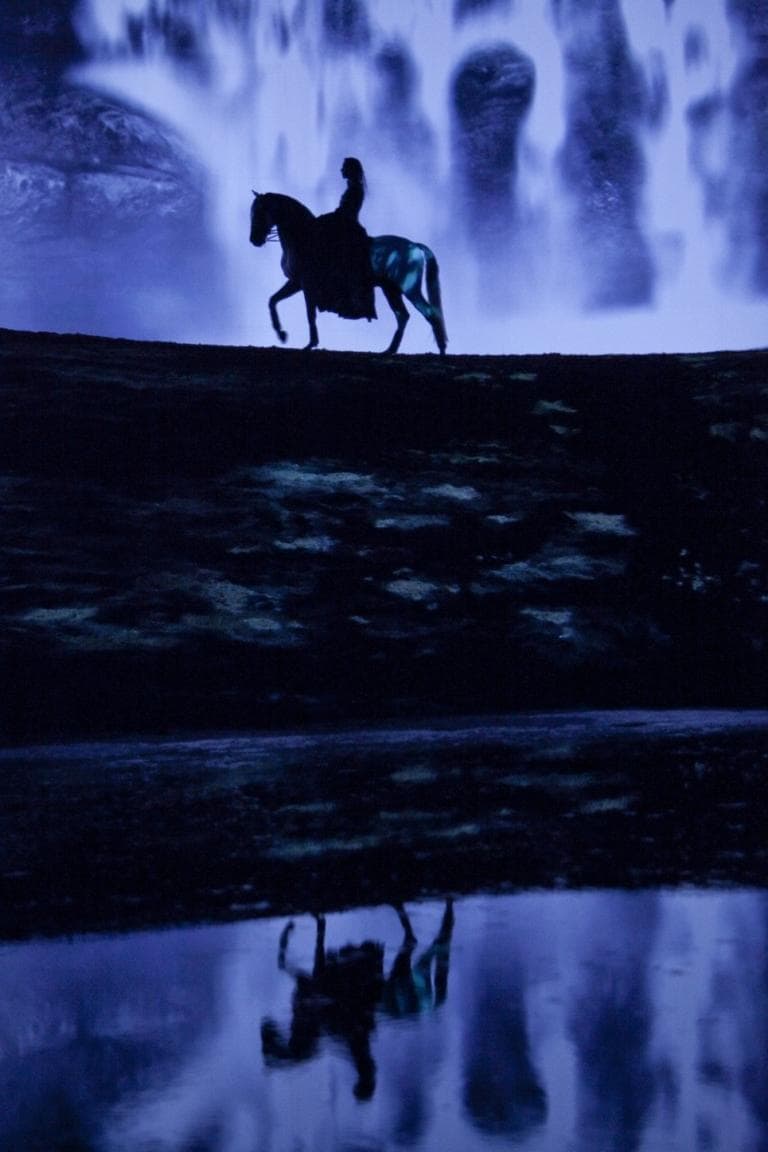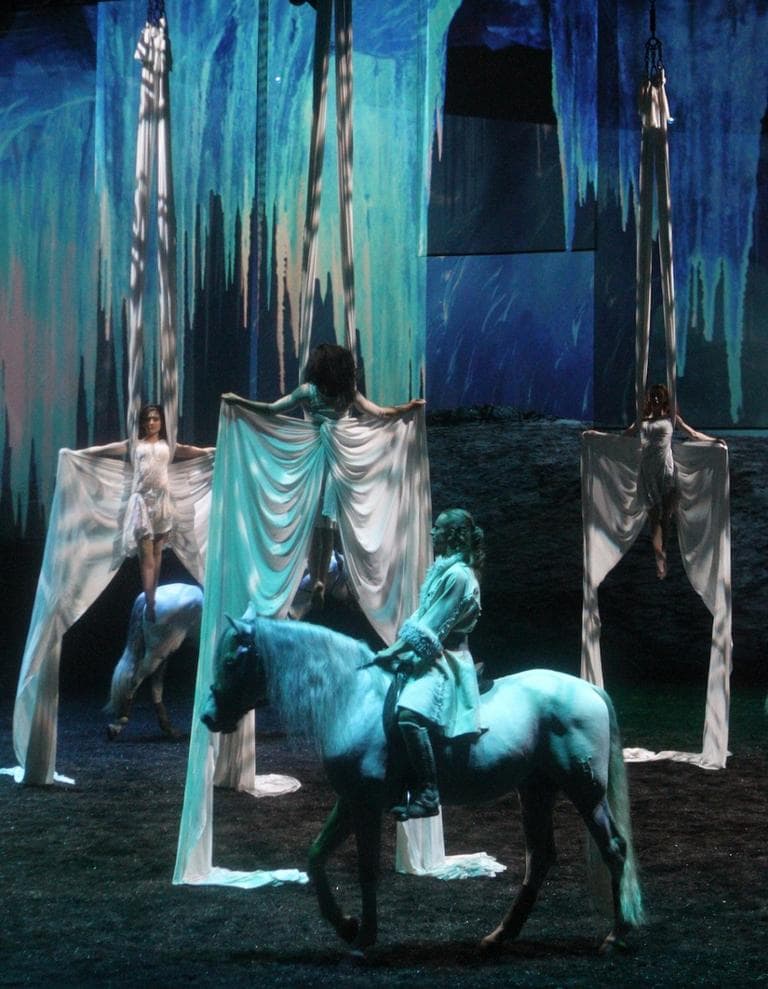Advertisement
'Odysseo' Turns Horseplay Into An Art Form
SOMERVILLE, Mass. — However you say 'Odysseo,' it’s correct. On opening night, everyone from the ticket taker to the announcer of the no photography policy had a different pronunciation. This is fitting, considering that when the lights came up for the last time under the big top at about 10:40 p.m., the chattering spectators revealed they had found different ways of seeing this kaleidoscopic show.

“You didn’t catch the woman fall off her horse at the end?” asked one man. Another queried, “Did you see when the white horse bit the black horse in the butt?” (The answer was “No!” in both cases.) In promotional material Wayne Fowkes, director and choreographer of Cavalia's "Odysseo," says that the horses bring an unpredictable element to each performance and in that way the show is never the same twice.
Picking out details from the huge cast of acrobats, horseback riders, aerialists, dancers, musicians and singers is one of many thrills, for sure, at this spectacle, which runs through Sept. 15 under a white big top at Assembly Square. But the bond of trust displayed by this herd of horses (up to 28 gallop around at a time) and their jubilant, fearless handlers creates energy that keeps the audience cheering, gasping, clapping and singing. The half-hour intermission offers a break to hash out the incredible display, and the last hour glides to an epic and fitting conclusion of this latest show from Cavalia founder Normand Latourelle.
On the surface, the dream-like assemblage of scenes has little cohesion. The scenery changes subtly and tastefully, guiding viewers in and out of places that seem both very real — the African Serengeti, the American Southwest — and very literary. One icy scene is reminiscent of "Doctor Zhivago," a night sky backdrop for a carousel segment calls to mind Poe’s “mountains of the moon,” and a stunning finale brings to life the Lady of the Lake on a silver horse.

"Odysseo's" careful construction is evident, however, in the ordering of acts. In addition to in-the-saddle tricks there is Roman riding, where equestrians keep each foot on the back of a trotting horse and vaulting, where galloping horses appear as innocuous as stationary pommel horses when jumped over and under by dexterous acrobats.
These displays are interwoven with horseless scenes of dizzying aerial artists and enthralling precision dancers, which allow horse and human performers to pace themselves while the audience experiences a near-uninterrupted ripple of adrenaline.
The show, which is based in Quebec, stumbles in just a few places. Some CGI elements projected on the giant screens behind the stage seem hokey: clouds whir rapidly in ways that defy science and silhouetted sparrows fly through the forest scenes. Additionally, the vocal interruptions in the almost wordless exhibition are jarring. A woman with a good voice performs an opening incantation on stage and reappears later. Her grace is marred by the acoustics of the big top, which render her songs (sung in Italian, according to the program) unintelligible.
In these overdone moments, it is easy to remember that Latourelle was also a cofounder of Cirque du Soliel, a show that remains a Las Vegas sensation. These minor lapses into artifice, however, cannot tarnish the overwhelming reality of the feats presented on stage, or the feelings of joy, valor and amazement they evoke.
The principle task of the viewers of "Odysseo" is to rationalize that such beauty and magnanimity, such athletic accomplishments of horse and human, and such mechanical cleverness can exist right in front of them. The show ended with a standing ovation. As the audience members filed out, they tried to figure out if it all really happened. It did.
Holly Van Leuven is a writer, publisher and musical theater historian in Boston. Her first book, the biography of song-and-dance man and Dorchester native Ray Bolger, is forthcoming.
This program aired on August 14, 2013. The audio for this program is not available.
